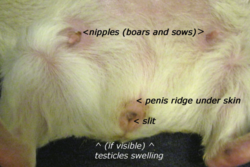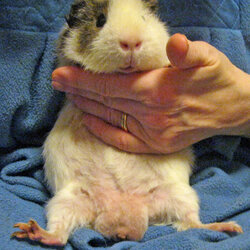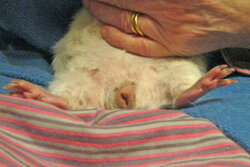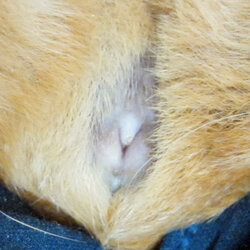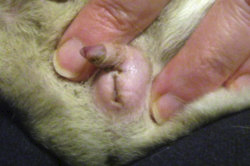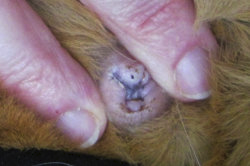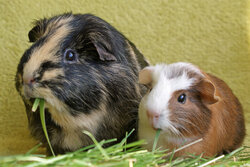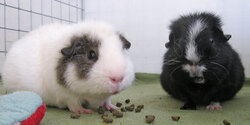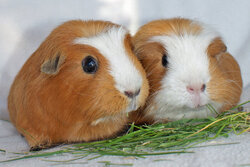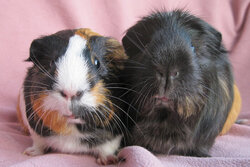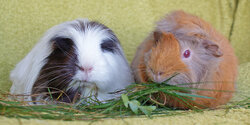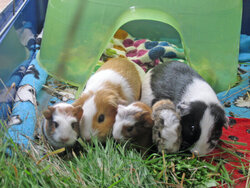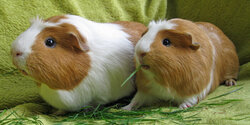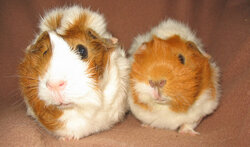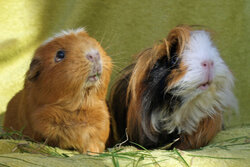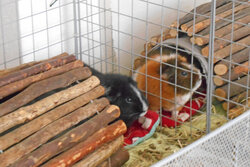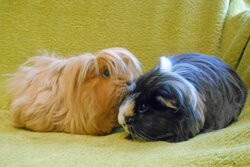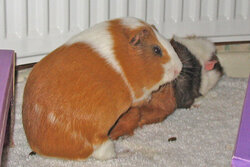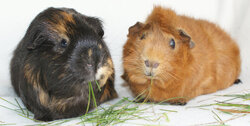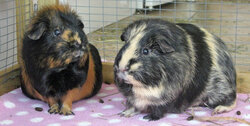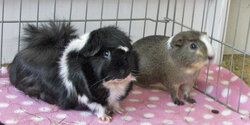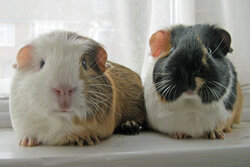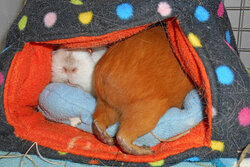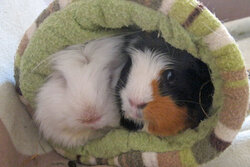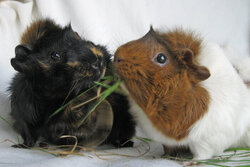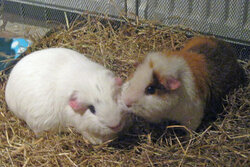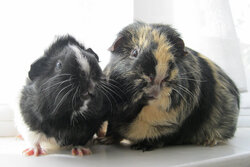This guide is an article series that I have written for Guinea Pig Magazine issues 50-52 (May/July/September 2019).
It is the propriety of GPM and is being shared on here with the magazine's permission.
Overview:
1 Introduction
2 Sexing Guinea pigs: Where to look and feel yourself
3 Boar Pairs
4 Sows Pairs
5 Mixed Pairs
6 Conclusion
1 Introduction
Pairs make up the vast majority of how guinea pigs are kept as pets.
Unfortunately, our wide-spread assumption of a pair of guinea pigs of being as cuddly and close with each other is as unrealistic as our idea of guinea pigs as instant cuddly animated toys. Being a social species doesn’t mean that it is as easy as sticking another guinea pig into a cage for happiness (Big No No!). Like humans, guinea pigs are people and react as individual personalities. And like humans, they have firm likes and dislikes as to who they gel with!
In the following I am taking a closer look at what makes boars, sows and mixed pairs work; what makes each combination special and what are the specific challenges as they go through life.
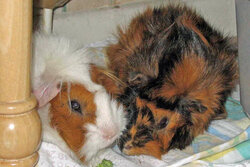
Minx and Mischief - best of girlfriends
It can of course only ever be a gross generalisation, considering how complex and varied guinea pig personalities are, which makes each bond unique and different. When it comes to guinea pigs, for every rule there are at least ten exceptions – and you will never cease to be surprised!
However, there are certain aspects that come up again and again and that are worth considering when you want to start out with guinea pigs or want to add more guinea pigs to your home or find a new friend for a bereaved or fallen-out piggy of yours.
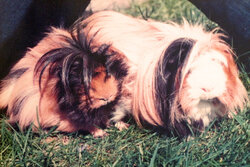
My badly pining first own piggy Strolch 'Rascal' with his new second 'emergency' wife Böhnchen 'Beanie'
There is no totally problem-free combination, and whether you want to opt for boars, sows or a mixed pair with at least one de-sexed partner is ultimately due to your personal preference, the availability of neutered boars or spayed sows and rescue access – or simply the piggy you fall in love with.
My first childhood guinea pigs were boys but when I fell in love with a large pair of very speaking eyes again as an adult, they belonged to a pet shop sow (who promptly presented me with some unplanned offspring right in the middle of a major family crisis!), and everything has followed on from that…
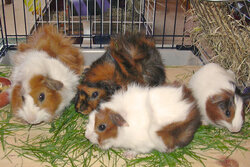
Minx with her companion Mischief (thankfully a sow, but it took two vet trips to verify!) and her two unplanned baby daughters
It is the propriety of GPM and is being shared on here with the magazine's permission.
Overview:
1 Introduction
2 Sexing Guinea pigs: Where to look and feel yourself
3 Boar Pairs
4 Sows Pairs
5 Mixed Pairs
6 Conclusion
1 Introduction
Pairs make up the vast majority of how guinea pigs are kept as pets.
Unfortunately, our wide-spread assumption of a pair of guinea pigs of being as cuddly and close with each other is as unrealistic as our idea of guinea pigs as instant cuddly animated toys. Being a social species doesn’t mean that it is as easy as sticking another guinea pig into a cage for happiness (Big No No!). Like humans, guinea pigs are people and react as individual personalities. And like humans, they have firm likes and dislikes as to who they gel with!
In the following I am taking a closer look at what makes boars, sows and mixed pairs work; what makes each combination special and what are the specific challenges as they go through life.

Minx and Mischief - best of girlfriends
It can of course only ever be a gross generalisation, considering how complex and varied guinea pig personalities are, which makes each bond unique and different. When it comes to guinea pigs, for every rule there are at least ten exceptions – and you will never cease to be surprised!
However, there are certain aspects that come up again and again and that are worth considering when you want to start out with guinea pigs or want to add more guinea pigs to your home or find a new friend for a bereaved or fallen-out piggy of yours.

My badly pining first own piggy Strolch 'Rascal' with his new second 'emergency' wife Böhnchen 'Beanie'
There is no totally problem-free combination, and whether you want to opt for boars, sows or a mixed pair with at least one de-sexed partner is ultimately due to your personal preference, the availability of neutered boars or spayed sows and rescue access – or simply the piggy you fall in love with.
My first childhood guinea pigs were boys but when I fell in love with a large pair of very speaking eyes again as an adult, they belonged to a pet shop sow (who promptly presented me with some unplanned offspring right in the middle of a major family crisis!), and everything has followed on from that…

Minx with her companion Mischief (thankfully a sow, but it took two vet trips to verify!) and her two unplanned baby daughters
